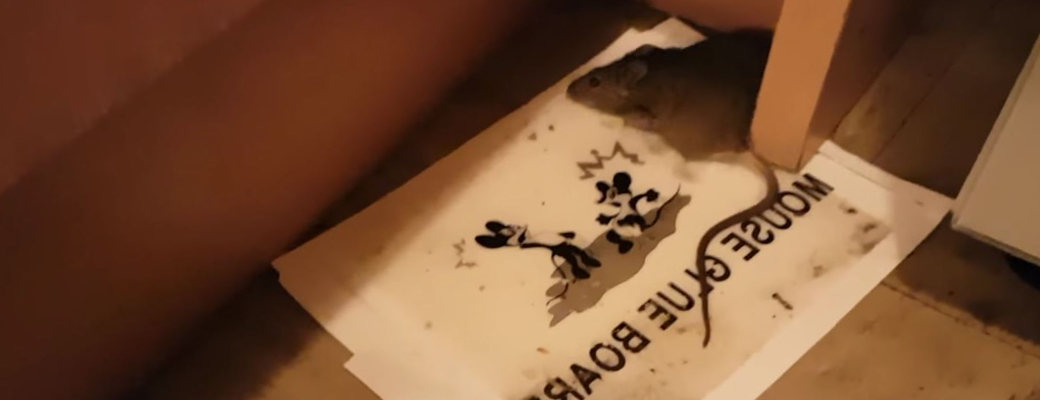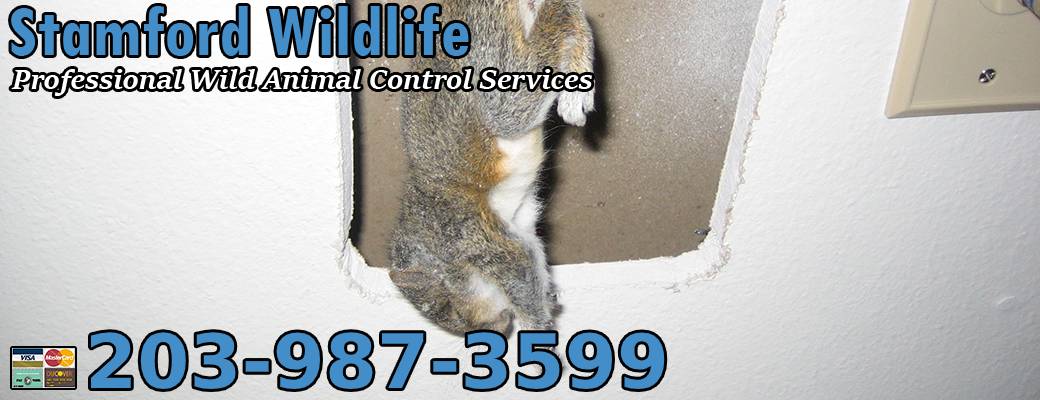Stamford Wildlife Control - 203-987-3599

Wildlife Trapping
When it's necessary to remove animals, we focus on humane and effective trapping and relocation.

Home Repairs
A critical step - the identification and repair of any and all wildlife entry points into the home.

Animals in Attic
We specialize in the removal of animals in the attic - squirrels, raccoons, rats, mice, bats, and more.

No Poisons!
We never use poisons in any part of our wildlife control, including rodent control. Poisons don't work!
We are Stamford Wildlife, and we solve conflicts between people and wild animals. From squirrels in your attic, to raccoons in your trash, to bats, rats, birds, and snakes, we do it all. We specialize in safe and effective solutions to Connecticut critter problems. We service the greater Stamford region, and we offer fast service - we can usually schedule a same-day appointment. Give us a call at 203-987-3599 any time, 24/7, and we will discuss your unique wild animal problem, and give you a free price quote over the phone. We're ready to take your call now!
Our service range: We service Fairfield County, Hartford County, Litchfield County, Middlesex County, New Haven, Windham County, New London County, Tolland County, and more. We also service West Haven, Waterbury, Torrington, Shelton, Norwich, Norwalk, New London, New Haven, New Britian, Milford, Middletown, Meriden, Hartford, Groton, Derby, Danbury, Bristol, Bridgeport, Ansonia, and more.
Stamford Wildlife Education: Analysis Of Inhumane Glue Traps For Rodents
No one really appreciates having their home or garage invaded by rodents of any kind, especially mice and rats. There are a number of ways to rid your home of these pesky critters. Some of these ways are more humane than others, and some are downright cruel. The glue trap is one that falls into the cruelty category.

How They Work
A glue trap is a very basic trap, one that can be made at home or purchased at some stores. The glue trap consists merely of a piece of cardboard or thin wood that has been smeared with glue and baited with a bit of food. This trap is cheap to make or buy, and easy to use. Theoretically, the rodent will be attracted to the food, walk onto the board, and get stuck in the glue. Store-bought glue traps are coated with a special mixture of resins, mineral oil, and synthetic rubber.
What Happens Next
Provided that the critter that got stuck on the glue trap is the one you were after, it will panic and try its best to get free from the glue. If no one is there to free or kill the rodent immediately, it will continue to thrash around and be very frightened. It can take up to five days for a rodent to die from starvation. Or it could get its nose stuck in the glue and suffocate within three to twenty-four hours. Many times a trapped animal will gnaw at the body part that is stuck, trying to free itself. Think of the old-time steel-jawed traps used by fur trappers years ago. Many times an animal would chew its own leg clear off in order to get free of the trap. This is the same principle, just a different type of trap. Even mice and rats have feelings, too. So even if you don’t like them, or want them in your home, you can still get rid of them in humane ways.
Releasing a Rodent
Even if you do come a long right after the rodent has gotten himself stuck to the glue trap, how will you release it and dispose of it? Many commercial traps just say to throw the whole thing in the trash. But then you have the problem of the rodent dying a slow, frightened death by dehydration and/or starvation. You have to be very careful that the rodent doesn’t bite you in its terror. The most humane thing to do at this point would be to kill in instantly, then dispose of it.
Other Animals
The big problem with glue traps, other than their basic cruelty, is that any animal or bird that comes along will smell the food bait and go in for it. You wouldn’t want your precious Fluffy cat to get stuck on one of these traps. Or the neighbor’s dog. Or any other living creature. Should this happen, you would have to take the animal and trap to your veterinarian or wildlife rehabilitator for them to release it. Occasionally, this even involves surgery. If no professional is available, the only other thing you can do it to work at freeing the creature yourself.
Releasing a Stuck Animal
You will need some vegetable oil, heavy gloves, and a good thick towel. Warm the oil, but don’t make it hot. Try a little on the inside of your wrist, as you would a baby’s bottle. Put on the gloves. Take the towel and place it near the base of the animal’s head without covering its head. Hold the animal firmly but gently. Take the oil and begin rubbing it on the critter’s fur, skin, or feathers right where it’s stuck to the glue. You will need to rub small amounts of oil gradually until the fur begins to loosen from the glue. This can take a very long time and will require a great deal of patience—yours and the animal’s. When the animal is finally free, you will still need to try to take it to a vet or wildlife rehabber so they can properly clean the oil off of the animal’s fur or feathers, as it will cause the animal problems. All the while you are doing this, you will need to exercise great caution that the animal doesn’t hurt you, as well as you not hurting the animal. A frightened animal, even a tame one, can bite and scratch when it is frightened. Another issue with releasing a trapped animal is that, depending on the size and type of animal, it may have very fragile, delicate bones that will break easily. Their fur or feathers will be stuck and get pulled out, which is painful.
In many places, the sale and use of glue traps is becoming illegal. So when the need arises for you to rid your home of unwanted rodents, choose a humane way of trapping them.
Previous Education Articles
Is it safe to handle a wild Stamford animal with bare hands?
Biology of a Stamford Norway rat
Is a Stamford opossum that is active during the daytime sick or rabid?
How to keep Stamford skunks away from your property


